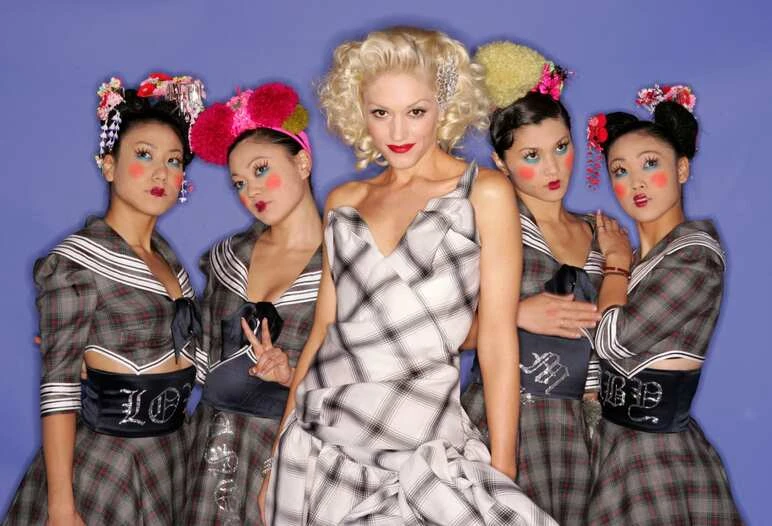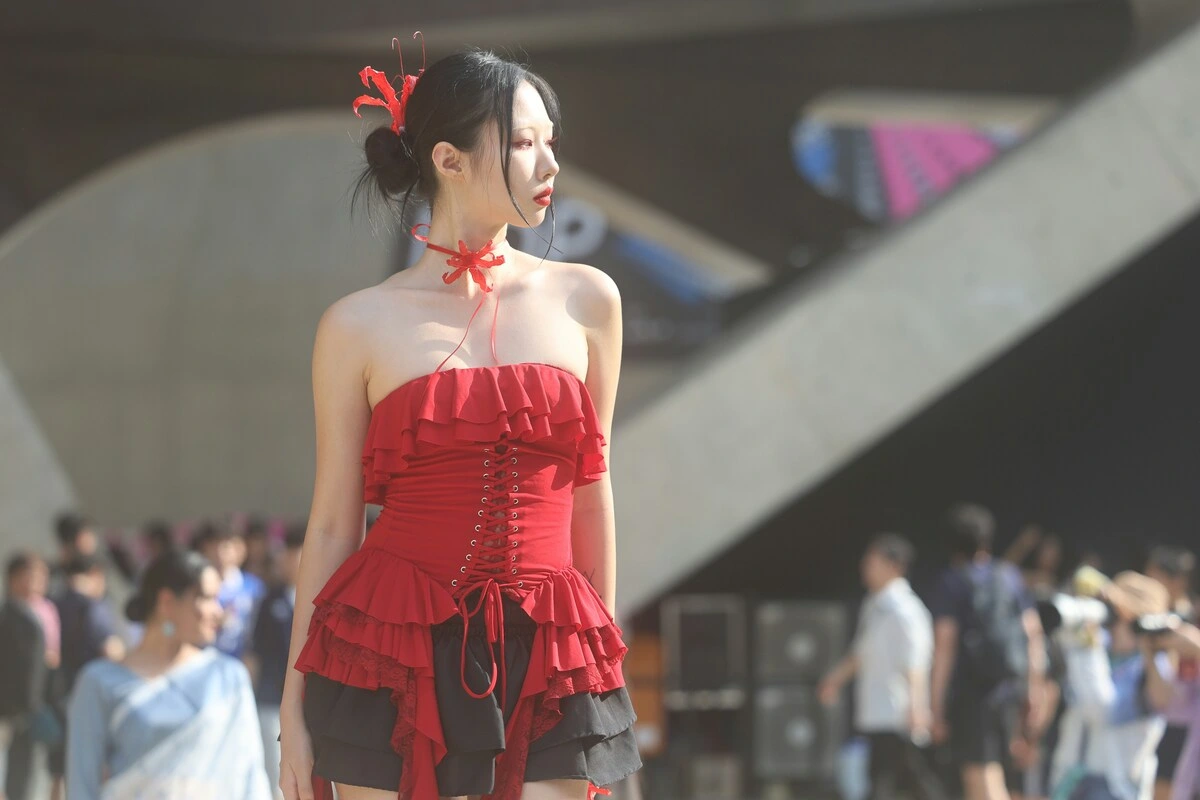
Japan’s electric pop culture is found in none other than Harajuku. The term probably rings a bell, especially when you see photographs. But what exactly is Harajuku? Is it an area? A fashion style? And why are people dressed daringly roaming the streets?
The meaning of Harajuku
Harajuku refers to people who wear bold, eccentric outfits, a signature of Japanese fashion. Indeed, Harajuku has captured the hearts of fashion enthusiasts around the world. But beyond being a style, Harajuku is also a district in Shibuya, Tokyo, known as one of Japan’s fashion capitals.
“Harajuku” means “meadow lodging” in Japanese. But in Tokyo, it alludes to a district in Shibuya that stretches from Harajuku Station to Omotesando. The area spans from Block 1 to Block 3, including the northern edge of Omotesando (now Jingu-mae Block 1). Nonetheless, Harajuku Station and its surrounding streets, like Takeshita Street, technically lie just outside the official district.
This area has become a true street catwalk for fashion lovers on every corner. Shops in the district offer everything needed to create a Harajuku look, from fabrics to quirky accessories.
Tracing the roots of Harajuku
According to the Japan National Tourism Organisation, the area began to flourish as a fashion hub around 1964, following the Tokyo Olympics, when many boutiques opened their doors. Harajuku gained further fame as a street fashion hotspot after fashion magazines like non-no and Anan featured the area. A group of young women known as the Annon-zoku would imitate magazine models’ outfits while strolling through the streets, inspiring others to join in.
By the 1980s, Takeshita Street became a magnet for visitors eager to see the Takenoko-zoku, a group of dancers in eccentric outfits performing street dances to boomboxes or music played from parked trucks. While the government banned these performances in 1992 for being disruptive, the spirit of creativity endured, and young people continued to gather in Harajuku wearing unique, daring outfits.
Legend has it that Harajuku style only began gaining recognition in the West around the 2000s. The Japan National Tourism Organisation also notes that the love for Harajuku fashion has helped shape cultural evolution in this district. Today, Harajuku has become one of the world’s fashion capitals, with Omotesando gaining comparison to Paris’s luxurious Champs-Élysées.
Its influence has even gone global. Gwen Stefani, former lead singer of No Doubt, is one celebrity famously obsessed with Harajuku fashion. She even immortalised it in her 2004 solo album Love. Angel. Music. Baby. with the song “Harajuku Girls.” What’s fascinating is that Harajuku isn’t just a showcase for eccentric fashion; it’s also a movement that pushes back against strict social rules and the pressure to conform.

Harajuku is all about creative fashion mashups
Unlike most styles, Harajuku fashion doesn’t refer to a single, defined one. Instead, it encompasses the eclectic, eye-catching outfits you’ll see throughout the Harajuku district, reflecting the perspectives and self-expression of Japan’s youth.
Harajuku fashion revolves around two key principles: community and freedom of expression. That’s why the outfits you encounter are bold, playful, and unbound by pre-existing fashion norms. It’s a style celebrated for clashing colours, layered clothing, and unapologetic individuality.
So, it’s perfectly normal to mix punk elements with school uniforms or combine gothic attire with designer pieces in Harajuku. It thrives on creativity, imagination, and vivid colour combinations. According to The Culture Trip, it’s all about merging character-inspired looks with unique fashion, resulting in extraordinary ensembles.
The key is expressing individuality through eclectic combinations of styles, colours, and patterns.
It’s instantly recognisable for its layered looks. Teenagers mix and match sweaters, t-shirts, vests, jackets, blouses, dresses, leggings, and more. Second-hand clothing and DIY styles are popular, letting wearers truly express themselves. Imagine a sweet floral skirt adorned with ribbons, paired with mismatched belts, hair clips, earrings, jewellery, and bags, since every accessory adds personality. Hairstyles also play a big role: pigtails, braids, and other playful hairdos complete the signature Harajuku look.
The many faces of Harajuku style
Early Harajuku fashion combined traditional Japanese attire, like kimonos and geta sandals, with Western-style clothing. Over time, it evolved into a unique blend of traditional and modern styles. Harajuku fashion isn’t one-size-fits-all. Some of the most iconic looks include:
1. Cosplay – Short for “costume play”, drawing inspiration from manga, anime, films, and video games while also embodying their personalities and mannerisms.
2. Decora – Known for its “kawaii” (cute) aesthetic that embraces bright, flamboyant outfits covered in accessories from head to toe.
3. Gothic Lolita – A dark, feminine, doll-like style.
4. Japanese Punk – Drawing inspiration from London’s 1970s punk movement, it’s all about rebellion through flashy clothing, accessories, makeup, and piercings.
5. Kawaii – Emphasising cuteness with pastel colours, ruffles, toys, and playful childlike elements.
Ko-Gyaru or Kogal – An ode to Japanese high school uniforms accessorised with cute, trendy add-ons.
6. Sweet Lolita – Inspired by the Rococo era and fantasy themes, with bright colours and whimsical motifs like fruit, candy, or classic fairy tales.
7. Wamono – A fusion of traditional Japanese clothing with Western fashion.
No matter what, smile and say “cheese!”
A central rule of Harajuku fashion is to always smile and say “cheese!” Wearing such bold outfits outside Harajuku naturally draws attention from people unfamiliar with this style. Smiling gracefully allows wearers to face curious onlookers confidently while staying true to themselves.
People asking questions or requesting photos can be replied to with a simple chant of “cheese!” and pose to match the theme of your outfit. Confidence and playfulness are part of the Harajuku experience.

Steal the look
Harajuku has three main shopping arteries: Takeshita Street, Cat Street, and Omotesando Street. These streets form the backbone of the area’s tourist circuit.
Takeshita Street, the busiest of them all, is a paradise for street fashion lovers. Here, visitors can discover the latest trends at affordable prices, browse unique boutiques and explore shops selling accessories, cosmetics, and merchandise. Meanwhile, Cat Street is a slightly quieter, trendy street lined with independent fashion stores, cafes, and lifestyle shops. Omotesando, moreover, is a tree-lined avenue home to high-end fashion brands and internationally renowned shoe stores.
Lucky visitors can even catch some free entertainment, as Harajuku is a hub for cosplayer gatherings. Timing is key, though. Visit in the late afternoon or evening, especially on weekends, and you’ll find Takeshita-Dori transformed into a sea of people.



 Mirella Pandjaitan
Mirella Pandjaitan
 Oct 30, 2025
Oct 30, 2025